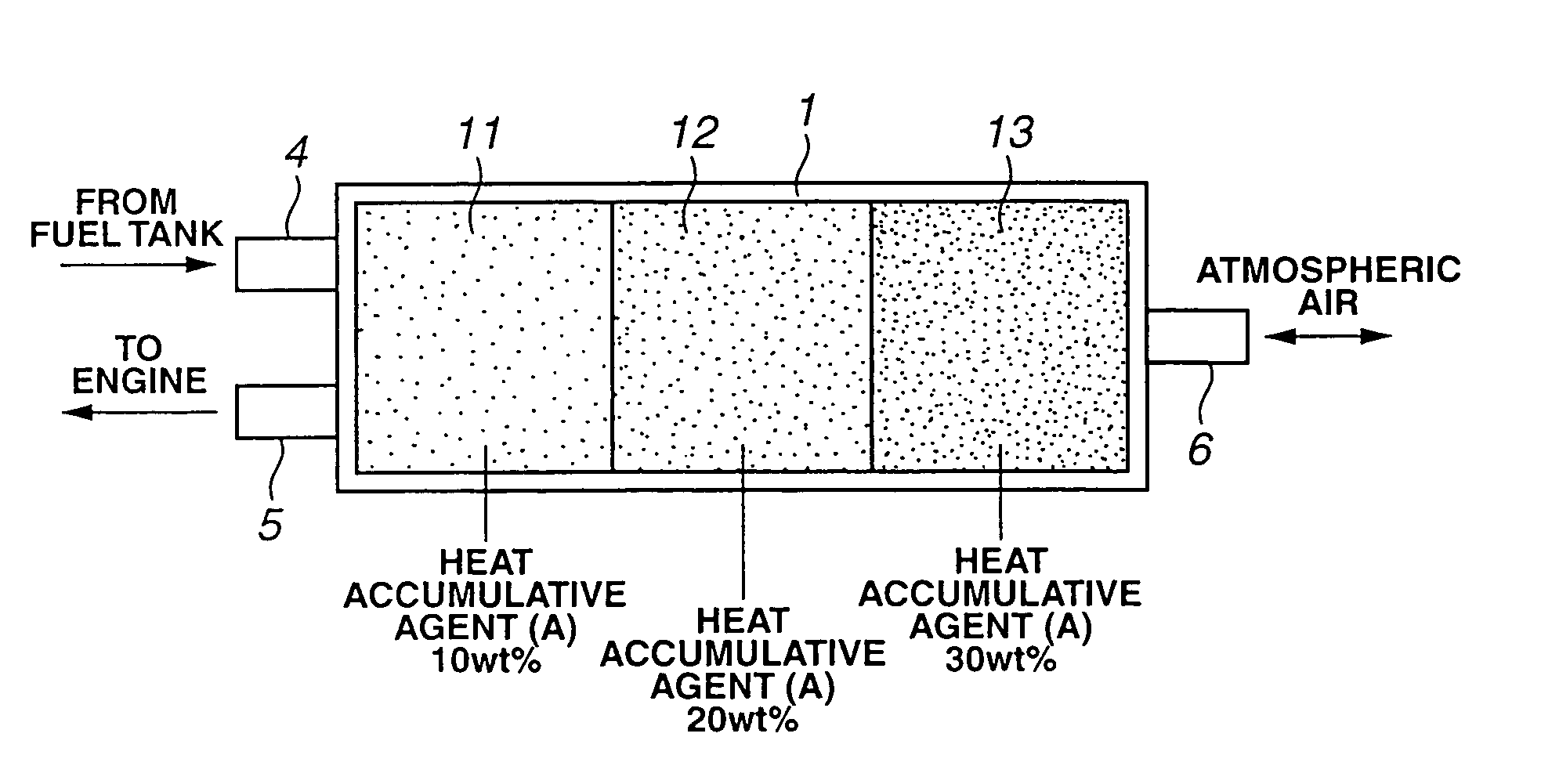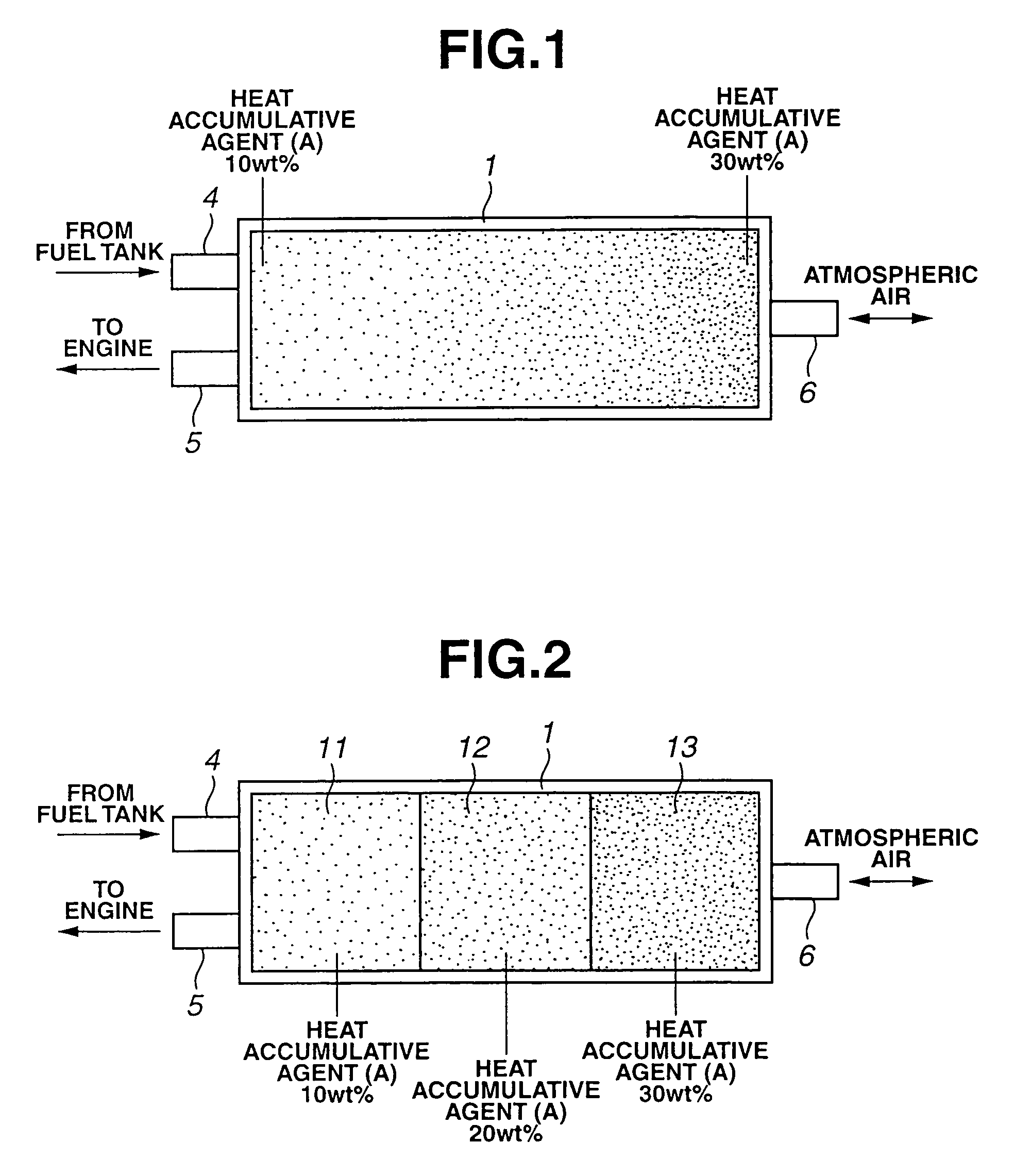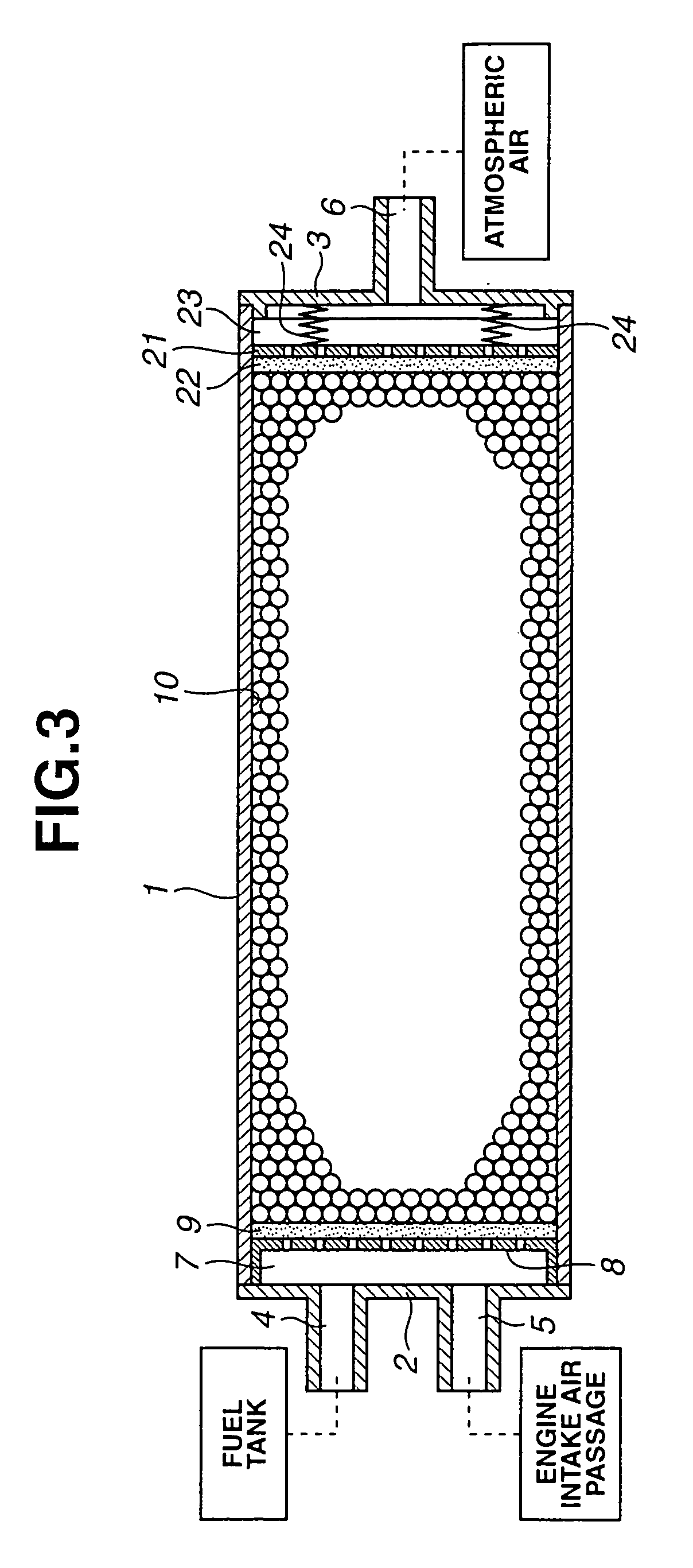Gas storage canister
a technology of gas storage canister and canister, which is applied in the direction of machines/engines, separation processes, combustion air/fuel air treatment, etc., can solve the problems of substantially difficult to obtain both effects, uneven temperature distribution of the canister during adsorption and desorption of vapor, etc., and achieve the effect of improving the adsorption ra
- Summary
- Abstract
- Description
- Claims
- Application Information
AI Technical Summary
Benefits of technology
Problems solved by technology
Method used
Image
Examples
example 1-1
[0061]A 37% formaldehyde aqueous solution in an amount of 6.5 g and water in an amount of 10 g were added to 5 g of powdered melamine to form a mixture. The mixture was adjusted to have a pH of 8, and then heated to about 70° C. thereby obtaining a melamine-formaldehyde initial-stage condensation product.
[0062]A mixture solution was prepared by dissolving 80 g of n-eicosane serving as a phase changing material into 100 g of a sodium salt aqueous solution of stylene-maleic anhydride copolymer which solution had been adjusted to pH 4.5. This mixture solution was added to the above melamine-formaldehyde initial-stage condensation product while being vigorously stirred thereby making emulsification, followed by a pH adjustment to pH 9, thus accomplishing a micro-encapsulation to form micro-capsules dispersed in the solution. Thereafter, solvent of the solution in which the micro-capsules were dispersed was removed upon being dried thus obtaining powdered bodies or micro-capsules (heat a...
example 1-2
[0067]The mix proportion of the same formed heat accumulative agent (A) and that of the formed activated carbon as were used in Example 1-1 were varied in a stepped manner so that the interior of the case 1 is partitioned into three regions in the direction of flow as shown in FIG. 2. A uniform mixture of 10 wt % of formed heat accumulative agent (A) and 90 wt % of formed activated carbon was packed in a first region 11 on the side of the vapor inflow port 4 and vapor outflow port 5, and a mixture of 20 wt % of formed heat accumulative agent (A) and 80 wt % of formed activated carbon was packed in a second region 12 in a central portion of the case. A uniform mixture of 30 wt % of formed heat accumulative agent and 70 wt % of formed activated carbon was packed in a third region 13 on the side of the atmosphere-opened port 6.
example 1-3
[0081]As shown in FIG. 12, formed activated carbon only was packed in a gas adsorbing material housing space 10a in a U-shaped canister, and a mixture of formed heat accumulative agent (A) and formed activated carbon was then packed in a second adsorbing material housing space 10b. Especially, at the end portion of the second adsorbing material housing space 10b at the side of a communication passage (space 36) which communicates with the first gas adsorbing material housing space 10b, formed heat accumulative agent (A) became 0 wt %, and formed activated carbon 100 wt %; at an end portion on the side of the atmosphere-opened port 6, formed heat accumulative agent (A) became 40 wt %; and formed activated carbon 60 wt % so that the mix proportion of the formed heat accumulative agent (A) at the two end portions varied continuously. Therefore, an average mix proportion in the canister as a whole became 10 wt % of formed heat accumulative agent (A) and 90 wt % of formed activated carbo...
PUM
 Login to View More
Login to View More Abstract
Description
Claims
Application Information
 Login to View More
Login to View More - R&D
- Intellectual Property
- Life Sciences
- Materials
- Tech Scout
- Unparalleled Data Quality
- Higher Quality Content
- 60% Fewer Hallucinations
Browse by: Latest US Patents, China's latest patents, Technical Efficacy Thesaurus, Application Domain, Technology Topic, Popular Technical Reports.
© 2025 PatSnap. All rights reserved.Legal|Privacy policy|Modern Slavery Act Transparency Statement|Sitemap|About US| Contact US: help@patsnap.com



